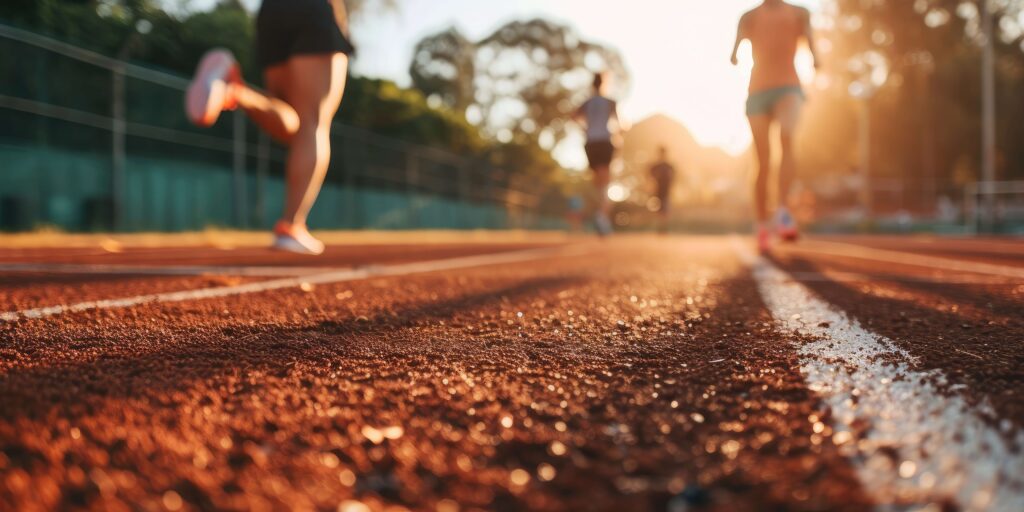Athlete’s foot, a common fungal infection affecting the skin of the feet, can be a persistent nuisance if not tackled effectively. In this blog, we will explore the ins and outs of athlete’s foot, from understanding its origins to practical strategies for prevention and treatment. So, let’s lace up our shoes and embark on a journey to healthier, happier feet..
Understanding Athlete’s Foot
Athlete’s foot, also known as tinea pedis, is a fungal infection caused by various dermatophyte fungi. This pesky condition thrives in warm and moist environments, making the feet an ideal breeding ground. Common symptoms include itching, redness, and cracked skin, often between the toes. Left untreated, it can lead to discomfort and potential complications.

The Origins of Athlete’s Foot
To combat athlete’s foot effectively, it’s crucial to understand its fungal origins. Dermatophytes, such as Trichophyton and Epidermophyton, are the culprits behind this infection. These fungi flourish in warm, damp conditions, making sweaty socks and shoes the perfect breeding ground.
Common Transmission Points
Athlete’s foot is highly contagious and can spread through various means. Shoes, public spaces like gym showers, and personal items such as towels or socks can harbor the fungus. Practicing good hygiene and being mindful of these potential transmission points is key to prevention.
Unexpected Havens
Shoes, often overlooked in the context of athlete’s foot, can play a significant role in harboring the fungus. To minimize fungal growth, choose breathable footwear and rotate shoes regularly. Allow them to air out and consider using antifungal powders or sprays.
Treatment Strategies: Home Remedies Reimagined
Managing athlete’s foot involves a combination of modern home remedies and over-the-counter medications. Antifungal creams, powders, and sprays can be effective in alleviating symptoms. Additionally, keeping feet dry and clean is crucial. Soaking in diluted vinegar or saltwater and applying tea tree oil may also aid in the healing process.
When to Seek Professional Help
While many cases of athlete’s foot can be managed at home, there are instances where professional intervention is necessary. If symptoms persist or worsen despite self-treatment, it’s time to consult our experienced podiatrist. They may prescribe stronger antifungal medications for severe cases.
Athlete’s Foot Beyond the Skin: Touch and Go
Avoid touching infected areas to prevent the spread of the fungus to other parts of the body, particularly the hands. Regular hand washing and maintaining overall hygiene are essential precautions to take during the treatment period.
Nail Troubles
When athlete’s foot extends to the toenails, treating the infection becomes more challenging. Fungi beneath the nail surface can be resilient. Patience and consistent treatment are necessary, and in severe cases, professional assistance may be required.
Prevention Techniques: Socks Matter
Choosing the right socks can make a significant difference in preventing athlete’s foot. Opt for breathable materials like cotton or moisture-wicking blends to keep your feet dry. Make sure your footwear allows proper ventilation to reduce the risk of fungal growth.
Hygiene Habits
Maintain dry and ventilated feet by changing socks regularly, especially after sweating. Consider using boot dryers and applying antifungal powder judiciously to keep your feet healthy and fungus-free.
Public Defense
In high-risk areas like gym showers or communal changing rooms, protective measures such as shower shoes are crucial. Personal hygiene, including not sharing towels or socks, is essential in preventing the transmission of athlete’s foot.
Post-Athlete’s Foot Care: Reducing Recurrence
Minimize the risk of re-infection by continuing good hygiene practices even after recovery. Regularly inspect your feet for signs of recurrence and address them promptly. For individuals who have recently recovered, maintain a vigilant eye on foot health.
Empowering Foot Health
Your podiatrist is your ally in the fight against athlete’s foot. Seeking professional help ensures lasting relief and comprehensive care for foot health. Don’t hesitate to consult Dr. Miyazaki for personalized guidance.Kick athlete’s foot out of your life by understanding its origins, embracing prevention techniques, and seeking timely treatment. Your foot health is in your hands, so lace up those shoes, follow these guidelines, and step confidently towards a fungus-free future. If in doubt, contact us for expert advice. Your feet deserve the best care.